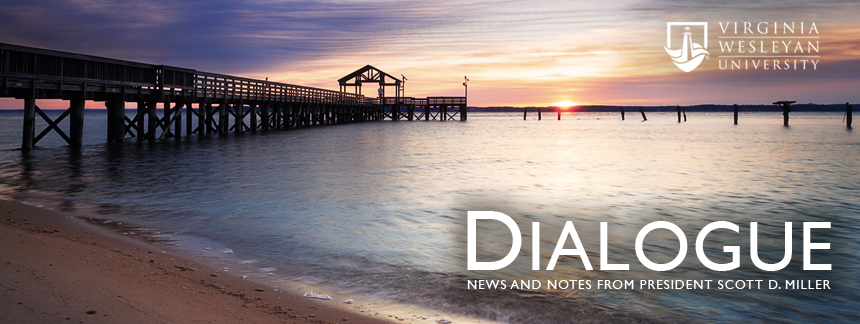Leveraging Capital Assets to Create Value
(College Planning and Management, June 2011 - by Scott D. Miller and Marylouise Fennell)
Increasingly, campus facilities have become a barometer of an institution’s success. We’ve previously written about the need to leverage capital assets such as land and facilities to advance the institution as part of an overall strategic plan, especially when times are tough.
Writing in our book Presidential Perspectives (Aramark publications), our colleague Dr. Walter M. Bortz III, president-emeritus of Hampden-Sydney College in Virginia, states: “Ensuring that the campus has curb appeal and is filled with first-class technology, faculty and facilities helps to guarantee the necessary enrollment to keep the enterprise operational and growing.” Investment in the nonacademic environment is critical to remaining competitive.
Managing cost and risk are paramount factors when embarking on new capital projects, warns Dr. Michael Townsley, former college president and noted higher education consultant. He cautions that a sensible financial strategy requires
¨ Focusing resources on the main goal to be achieved by the project. Because planning assumptions may prove false, Dr. Townsley emphasizes that risk management means cutting the probability of failure while reducing risk. In our experience, here are several ways to offset debt and/or to reuse the project in another way to reduce capital and operating costs:
¨ Build with an alternate use. Contrary to myth, we don’t believe that all capital projects need to be put on hold until “times are better.” Rather than throwing up buildings randomly, though, we recommend that they be built with an alternative use because unlike in the movies, when you build it, they don’t automatically come.
Student residences, for example, can be designed as garden-style apartments for rental should enrollment fall. We also recommend:
Rent rather than build.
High commercial vacancy rates in many areas in today’s recessionary economy represent an opportunity for colleges to lease space in desirable areas at a competitive price, without the concurrent costs of upkeep. Also consider sharing space with other institutions.
Use underperforming facilities to build partnerships.
Entrepreneurial universities today are characteristically “aggressive and cooperative,” says Dr. William Flores, president of the University of Houston-Downtown, whose institution co-located a new campus in the northwest sector of that city at one of the state’s fastest-growing community colleges.
Land also represents a valuable institutional resource that cannot be allowed to become non-performing. Playing fields and courts, classrooms and performing arts facilities can become attractive venues for community groups and summer camps when classes are not in session. By recruiting users whose mission and goals are synergistic with that of the institution, colleges can create a “win-win” while advancing both enrollment and financial sustainability.
One type of public-private partnership with significant potential is mixed-use developments permitting commercial (retail) and/or private residential use of a portion of college-owned land, often along the perimeters of campus. President Joseph C. Rallo of Angelo State University, San Angelo, TX, a campus which has entered into agreements with commercial developers, points out that many institutions own tracts with unrealized potential that are not needed for future campus development.
“Given the uncertainties of future university funding, a mixed-use project can be an attractive entrepreneurial approach for others to explore,” Dr. Rallo writes in Presidential Perspectives.
Seek synergistic leasebacks and business partnerships.
Leaseback arrangements in which institutions work with private investors to establish a separate entity to purchase land, construct facilities and in some cases, manage them, can offer tax and other advantages while creating access to new funding sources. Likewise, many institutions have formed business partnerships with companies to build research labs, retail business and other facilities that benefit both the institution and the business partner.
Often, the “old reliables” of financing capital construction—bonds, loans, gifts and higher tuition—are insufficient to offset either the costs or the risks of needed capital investment. Joining the “arms” (facilities) race demands that presidents find ways to remain competitive while meeting rising student, family and community expectations and leveraging costs.
# # # #
Dr. Scott D. Miller is President of the College and M.M. Cochran Professor of Leadership Studies at Bethany College in West Virginia. Now in his third college presidency, he has served as a CEO for 20 years.
Dr. Marylouise Fennell, RSM, a former president of Carlow University in Pittsburgh, PA, is senior counsel for the Council of Independent Colleges (CIC) and a partner in Hyatt Fennell, Higher Education Services-The TCR Group
They have collaborated on six books, including “President to President: Views on Technology in Higher Education” (2010) and “Presidential Perspectives: Economic Prosperity in the Next Decade” (2010.) Both serve as consultants to college presidents and boards.
